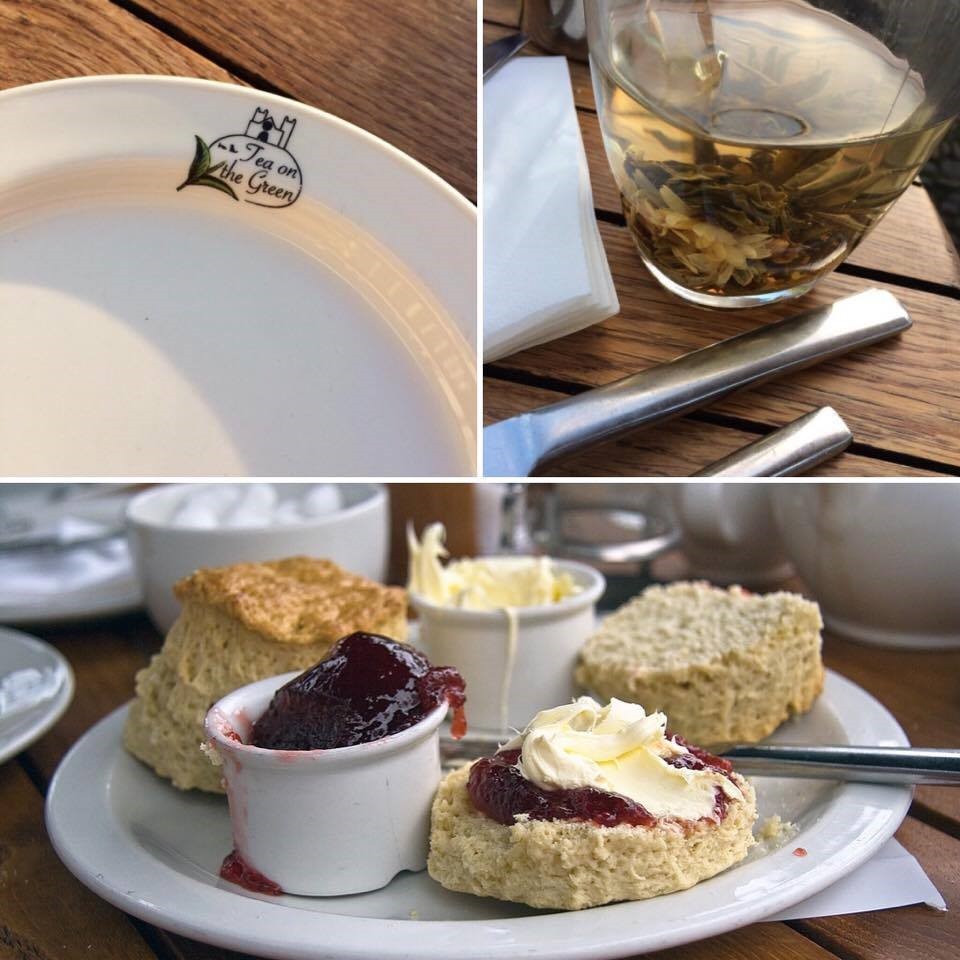When I applied for university last year, I couldn’t make it to an Open Day in Exeter.  I tried to ask around and get as much information as I could about the campus and the area. One thing I was constantly said by friends and that was emphasised on all the websites I looked at was how beautiful the South West was and how great the weather could be here compared to other parts of the UK. As I arrived on a rather sunny weekend in September, I faced the greenest campus I could have imagined and the most amazing view I could wake up to. Even though I was yet to explore all the beauties and treasures the area had to offer, I knew instantly that I chose the right place. One year was hardly enough to discover everything I wanted and there are still dozens of places I long to go to. For now, here are some of the locations I visited and things I did during my first year, all of which I would highly recommend to anyone coming to Devon.
I tried to ask around and get as much information as I could about the campus and the area. One thing I was constantly said by friends and that was emphasised on all the websites I looked at was how beautiful the South West was and how great the weather could be here compared to other parts of the UK. As I arrived on a rather sunny weekend in September, I faced the greenest campus I could have imagined and the most amazing view I could wake up to. Even though I was yet to explore all the beauties and treasures the area had to offer, I knew instantly that I chose the right place. One year was hardly enough to discover everything I wanted and there are still dozens of places I long to go to. For now, here are some of the locations I visited and things I did during my first year, all of which I would highly recommend to anyone coming to Devon.
Heavenly scones in Tea on the Green
Do you pronounce scone to rhyme with ’tone’ or ’gone’? Is it jam or cream first? As for me, I belong to that 33% who say /skəʊn/ (rhymes with ’tone’) and it’s always cream first, jam second.
If you’re experiencing the British way of life for the first time, you may wonder what on earth I’m talking about. Well, it’s something Brits can argue about for hours. The pronunciation mostly depends on where one comes from. Two-thirds of the British population as well as Australians and Canadians say /skɒn/, while most Irish and Americans pronounce the word as /skəʊn/. As for the jam/cream order, it’s just a matter of preference but subject to heated debates among Brits. 
But what are scones anyway? They are the quintessential part of cream tea, a specialty of Devon and Cornwall, so it’s a must if you visit the area. Scones are small lightly sweetened cakes, served with jam and clotted cream. They are soft, fluffy and crumbly at the same time, which makes your taste buds crave for more, although you’ll definitely have your hunger and daily intake of calories sufficed once you finished it all. It’s best with the traditional Devonshire clotted cream and strawberry jam, along with a cuppa tea of course.
There are plenty of cafés and tea rooms that offer cream tea in Exeter but the best place to go to is Tea on the Green. With its building overlooking the Cathedral’s monumental towers, you’ll surely have a relaxing time here. This restaurant is said to serve the best scones in the whole UK, so be sure to check it out! I also tried blooming tea here, which was not only incredibly flavoursome, but also a beautiful spectacle, as the flower inside the cup emerged as the centrepiece.
Interesting history and fascinating architecture
Exeter’s Historic Quayside is probably one of the first places one goes to when discovering the city. Somehow though, I ended up visiting the site only in January. Strangely, it was sunny (the photo below was taken this time) and we had a lovely time walking alongside the river on the cobbled street, admiring the little ducks in the water, and finally – when it got a bit colder – grabbing a cappuccino in On The Waterfront.
The Quay is edged with an eclectic mix of cafés and restaurants, where you can order great foods and drinks while sitting outside and enjoying the sight of cute little houses and the sound of babbling water. Worry not if the weather’s gloomy, as is often the case in England,you can still have a nice hot chocolate to warm yourself up at one of the places inside. On The Waterfront, for example, has a great atmosphere with brick arches, elegant sofas and dim lighting. Amidst the restaurants, you can also find some lovely vintage shops with unique furniture, jewellery, postcards and other accessories. So, if you come to Exeter in September, I recommend visiting this fascinating area during your first few weeks. Don’t wait until January as I did, it’s only a 30-minute walk or a 10-minute bike ride from the campus!
A little seaside getaway
The good thing about Exeter is that it’s close to the picturesque villages and sandy beaches of the English Riviera. If you have no deadlines approaching or just feel that you deserve a day-off, take your backpack and head to one of the seaside towns of the southern coastline.
The English Riviera is the nickname of Torbay, Devon’s most attractive tourist destination. At the heart of the coast are the scenic harbours of Torquay. With its Victorian appearance and vibrant pubs on the seashore, the town is a major holiday resort in the UK. There’s plenty to do here, one of the most popular attractions is Living Coasts, Torquay’s award-winning zoo and aquarium. You can get closer to playful penguins, otters and seals or admire many different species of fish and birds. 
If you move towards the south, the next town is Paignton, loved for its colourful and lively seafront. Its long sandy beaches are ideal for kids to build sandcastles, divers to explore the marine life and surfers to ride the waves. And if you long for something more energetic after a relaxing day on the beach, you can stroll along the bustling Paignton Pier where you can choose from hundreds of amusements, including dodgems, bouncy slides, toy grabber machines and many more.
Other towns in the area are definitely worth a visit as well, including Brixham, famous for its fine selection of seafood restaurants, and Dartmouth, an enchanting town with historic castles and a breathtaking landscape.
Windy beaches close to home
The Jurassic Coast stretches from Exmouth to Studland Bay, encompassing natural arches, sky blue coves, sea stacks and other interesting landforms. Unfortunately, I’ve only been to Exmouth, thus, haven’t seen the most well-known parts of the coast such as Durdle Door, Old Harry Rocks or Lulworth Cove. They’re at the top of my bucket list though.

Exmouth is a 30-minute journey from Exeter and one of the oldest seaside towns in Devon, certainly worthy to visit when you’re not overwhelmed by assignments. As you make your way from the train station to the beach, you’ll spot water sport lovers kite surfing, kayaking or wind surfing in the sea. Exmouth is a regional centre for these sports, so if you’re a fan, this is the perfect place for you. Continue your walk towards the red sandstone cliffs and if you feel adventurous, climb up to get a panoramic view of the sandy beach and dramatic rocks. As a centre for seafood, the town offers the finest mussels and freshly caught fish in its restaurants overlooking the azure sea. We had a lovely meal in South Beach Café where, being a seafood lover, I ordered a ‘Seafood Sharer’ with one of my friends. It was served on a bin lid (😃) and consisted of calamari, fish goujons, smoked salmon, mussels, oysters and shell on prawns. Needless to say, I couldn’t move after we finished it.
As you carry on with your stroll along the seafront, you’ll find ever more spectacular natural beauties and charming villages. Sidmouth, where you can meet cute donkeys in The Donkey Sanctuary, and Seaton, at the heart of the East Devon Area of Outstanding Natural Beauty, are surely not to be missed.
The time I crossed the river
Exeter is tiny. Or so I’ve been told. First, it didn’t seem small at all because, even though everything I needed was a 20-minute or so distance from my new home, there was a great selection of all kinds of stores and I didn’t need to buy my groceries or clothes in the same shop every time. After a few months though, I started to feel that it is indeed a little city. And then I crossed the river. I walked to the other half of Exeter, the part I wasn’t familiar with. I went to play bowling with the Hungarian Society and the venue was on the other side of the city. While walking there, I noticed a huge M&S Foodhall, more restaurants, an Aldi and another train station. I realised that there were more to do in Exeter than I expected.
The bowling took place in Tenpin. There are several bowling lanes, arcades, pool tables and a bar. It’s a great place to enjoy some time with your pals and you can even try Cosmic bowling where you bowl in the dark with neon lights. Bowling and drinks are at half price on Tuesdays and after you showed off your bowling talent, you can head to Exeter’s favourite party, Cheesy Tuesday in Unit 1. So, here’s your perfect Tuesday evening. You don’t want to miss out on that, do you?
Fascinating landforms and rich wildlife
Only an hour drive from Exeter is Dartmoor, an extensive area of moorland, attracting hundreds of thousands of visitors each year. Whether you want to get away from uni or would rather burn some calories through cycling, running, climbing or canoeing, Dartmoor offers a wide range of activities for both those looking for tranquillity and those seeking ways to exercise.
Plenty of paths and tracks run through the National Park, encircling rocky tors and hills, hidden villages and steep river valleys. Its best-known landmark is Haytor, a granite tor on the eastern side of the park. From its peak at 457 metres, the view is stunning, so it’s definitely worth the effort climbing up there. If you look for natural beauties, you must also visit the Clapper Bridge at Postbridge, High Willhays – the highest point of Dartmoor, and Yes Tor – slightly lower but more impressive. If you’re interested in animal life, this is your heaven, as you can meet ponies (Dartmoor’s most iconic animals), rabbits, otters, badgers, squirrels, weasels, stoats, deer and many other species during your time there.
Towns and villages in the area are relatively small but have interesting history and strong rural heritage. Most of them date back to the Middle Ages and are traditional market towns, thus, you’ll find many independent retailers, offering local products such as fresh groceries and handmade crafts. Some of the largest towns include Ashburton, Buckfastleigh, Moretonhampstead and Princetown.
An old tradition survives
Is it the 5th of November? Make sure you don’t sit in your room on Bonfire Night! There are a number of traditions associated with the day and several celebrations to take part in, the most extravagant of which takes place in Ottery St Mary, a little town close to Exeter.
Guy Fawkes Night (another name for this day) is an annual commemoration observed in Britain, dating back to the events of 5 November 1605 when Guy Fawkes was arrested while guarding explosives the plotters had placed beneath the House of Lords. Celebrating the plot’s failure, people lit bonfires and soon it became an annual public day.
I went to Ottery St Mary on Guy Fawkes Night with the TravelExe society to see the locals commemorating the day. According to their old custom, men carry lit tar barrels on their backs and chase each other along the streets while a huge crowd of spectators gather around and follow them. The flaming barrels fall apart, excitement grows and people awe. Once you’ve had enough of marvelling at this unusual action, try some good food or warm yourself up with a hot drink at one of the street vendors, or head straight to the fairground where you can gaze at the traditional bonfire and choose from plenty of amusements. 
At the end of my first year I’m 100% sure that I chose the best place. Devon has plenty to offer, from sport activities to fine dining, there’s always something you can do when you need some time-out. I have two more years in Exeter, which implies two more years of adventure and discovering amazing places in the South West. Arguably, there are hundreds, if not thousands, of natural beauties to explore, beaches to stroll along and tucked away villages to visit. My bucket list expands and I hope I’ll be able to go to as many places as I’d like, even though I know my second year of studies will require more effort.
